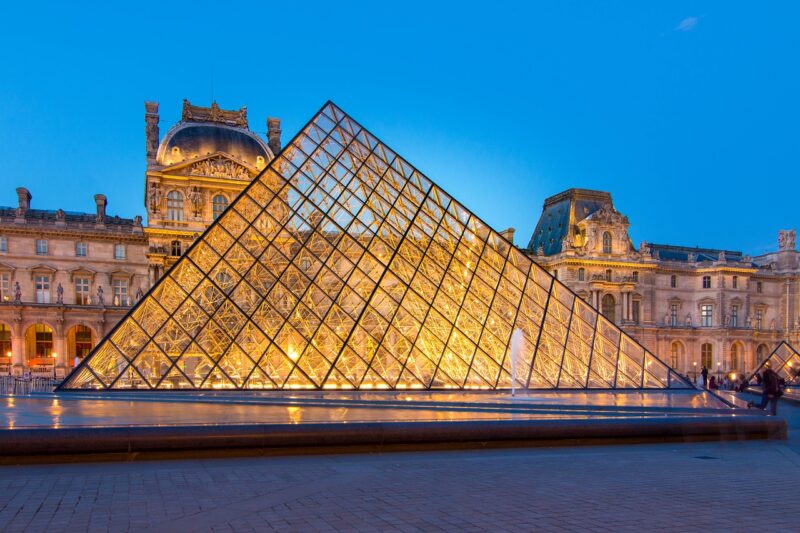Welcome to the Louvre Museum, one of the most iconic and globally recognized art museums in the world. Nestled in the heart of Paris, the Louvre is a treasure trove of human creativity, history, and culture, housing an expansive collection of art that spans millennia. From ancient civilizations to the Renaissance and beyond, the Louvre offers an unparalleled glimpse into humanity’s artistic achievements. Let’s embark on a journey to uncover the wonders of this magnificent museum.
Table of Contents
- History of the Louvre
- Architecture and Layout
- The Collections
- Masterpieces of the Louvre
- Lesser-Known Treasures
- Visitor Experience
- Special Exhibitions and Events
- The Louvre’s Role in Popular Culture
- Dining and Shopping at the Louvre
- Virtual Tours and Digital Resources
- Preservation and Research
- Nearby Attractions
- Visitor Tips and Recommendations
- Conclusion
- FAQs
History of the Louvre
The Louvre’s story begins in the late 12th century, initially built as a fortress by King Philip II to protect Paris from invasions. Over time, it evolved into a royal palace for the French monarchy. It wasn’t until 1793, during the French Revolution, that the Louvre was transformed into a public museum, opening its doors to the world. This transformation marked the beginning of its journey as a repository of art and history, growing in stature and collection with each passing century.
Architecture and Layout
One of the most recognizable features of the Louvre is its glass pyramid, designed by architect I.M. Pei and inaugurated in 1989. This modern structure serves as the main entrance and has become a symbol of the museum itself. The Louvre is divided into three main wings: Denon, Richelieu, and Sully. Each wing houses different collections and exhibitions, offering a unique architectural and artistic experience. The museum’s blend of historic and contemporary design elements makes it a fascinating architectural marvel.
The Collections
The Louvre’s collections are vast and varied, encompassing art and artifacts from different regions and eras. The Ancient Near Eastern Antiquities collection showcases early civilizations like Mesopotamia and Persia, while the Egyptian Antiquities section is renowned for its impressive array of artifacts, including mummies and sarcophagi. The Greek, Etruscan, and Roman Antiquities collection highlights classical sculptures and pottery, revealing the artistic achievements of these ancient cultures.
Masterpieces of the Louvre
Among the Louvre’s most celebrated works are the Mona Lisa, the Venus de Milo, and the Winged Victory of Samothrace. Leonardo da Vinci’s Mona Lisa is perhaps the most famous painting in the world, drawing millions of visitors each year. The Venus de Milo, a stunning representation of the goddess Aphrodite, captivates with its beauty and mystery. The Winged Victory of Samothrace, a majestic Hellenistic sculpture, commands attention with its dynamic form and powerful presence.
Lesser-Known Treasures
While the Louvre’s masterpieces are well-known, it also houses many lesser-known treasures worth exploring. The Code of Hammurabi, one of the earliest written legal codes, provides a fascinating glimpse into ancient Babylonian society. Jacques-Louis David’s The Coronation of Napoleon offers a dramatic depiction of a pivotal moment in French history. Eugène Delacroix’s Liberty Leading the People, a powerful symbol of freedom and revolution, continues to inspire viewers with its emotional intensity.
Visitor Experience
Planning a visit to the Louvre can be an exciting yet daunting task. To make the most of your trip, it’s essential to plan ahead. The museum offers various ticket options, including skip-the-line passes and guided tours. Navigating the museum can be challenging due to its vast size, so it’s helpful to prioritize the sections you wish to explore. The Louvre is committed to accessibility, providing facilities and services to ensure a comfortable experience for all visitors.
Special Exhibitions and Events
The Louvre regularly hosts special exhibitions that offer fresh perspectives on its collections and new insights into various artistic and historical themes. Additionally, the museum organizes cultural events and educational programs, including workshops, lectures, and performances, enriching the visitor experience and fostering a deeper appreciation for art and history.
The Louvre’s Role in Popular Culture
The Louvre has left an indelible mark on popular culture, appearing in numerous films, books, and artworks. From Dan Brown’s “The Da Vinci Code” to blockbuster movies like “Mission: Impossible – Fallout,” the museum’s iconic presence has captivated audiences worldwide. Its influence extends beyond entertainment, inspiring contemporary artists and architects to draw from its rich heritage.
Dining and Shopping at the Louvre
After a day of exploring, visitors can relax and recharge at the museum’s various dining options. From casual cafes to elegant restaurants, the Louvre offers a range of culinary experiences to suit all tastes. The museum also boasts an array of souvenir shops and bookstores, where visitors can purchase unique gifts, art replicas, and literature to commemorate their visit.
Virtual Tours and Digital Resources
For those unable to visit in person, the Louvre provides a wealth of digital resources, including virtual tours and online exhibits. These platforms allow art enthusiasts worldwide to explore the museum’s collections from the comfort of their homes. Additionally, mobile apps and interactive maps enhance the visitor experience, offering detailed information and interactive guides to help navigate the museum.
Preservation and Research
The Louvre is not just a museum but also a hub for preservation and research. Conservation efforts are continually underway to protect and restore the artworks, ensuring they remain in pristine condition for future generations. The museum also engages in ongoing archaeological and historical research, contributing valuable insights to the academic community and enriching our understanding of history and culture.
Nearby Attractions
A visit to the Louvre is just the beginning of a delightful Parisian adventure. Nearby, you’ll find the beautiful Jardin des Tuileries, perfect for a leisurely stroll amidst stunning landscapes and sculptures. The Musée d’Orsay, another world-renowned museum, is just across the Seine and offers an impressive collection of Impressionist and post-Impressionist masterpieces. For a different perspective of Paris, consider taking a Seine River Cruise, which provides breathtaking views of the city’s landmarks.
Visitor Tips and Recommendations
To make the most of your visit to the Louvre, here are a few tips and recommendations:
- Best Times to Visit: The museum can be crowded, especially during peak tourist seasons. Visiting early in the morning or on weekday afternoons can help you avoid the largest crowds.
- Must-See Artworks: While the Mona Lisa and other famous pieces are essential, take time to explore lesser-known sections of the museum for a more rounded experience.
- Avoiding the Crowds: Consider visiting during the museum’s extended evening hours on Wednesdays and Fridays, when the ambiance is quieter and more relaxed.
Conclusion
The Louvre Museum stands as a testament to human creativity, history, and culture. Its vast collections, architectural beauty, and significant role in popular culture make it a must-visit destination for anyone passionate about art and history. Whether you’re an art aficionado or a curious traveler, the Louvre offers a rich, immersive experience that will leave you with lasting memories. Plan your visit, explore its treasures, and let the wonders of the Louvre inspire you.
FAQs
- What are the Louvre’s opening hours?
- The Louvre is open every day except Tuesday and certain holidays. Regular hours are from 9:00 AM to 6:00 PM, with extended hours until 9:45 PM on Wednesdays and Fridays.
- Can I take photos inside the Louvre?
- Yes, photography is allowed in most areas of the museum, but flash and tripods are prohibited to protect the artworks.
- How can I buy tickets for the Louvre?
- Tickets can be purchased online through the Louvre’s official website or at the museum. It’s recommended to buy tickets in advance to avoid long queues.
- Are there guided tours available?
- Yes, the Louvre offers a variety of guided tours, including themed tours and private group tours, available in multiple languages.
- Is the Louvre accessible for visitors with disabilities?
- The Louvre is committed to accessibility and provides services such as wheelchair rentals, elevators, and adapted tours to ensure all visitors can enjoy the museum comfortably.









